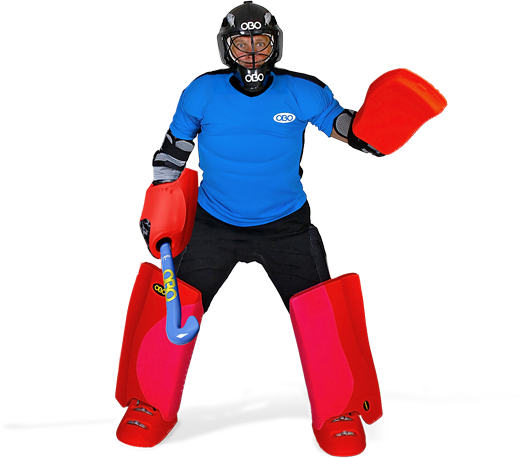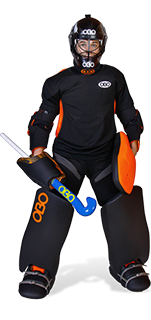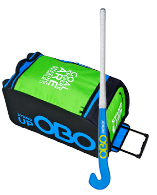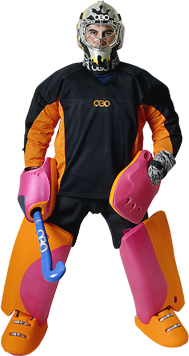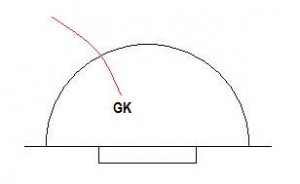KEEPERS RESOURCES

Aerials into the D
On the international scene aerials are becoming more and more popular as an offensive option; pushing up the pitch, with a deflector running onto the end of the aerial and tipping the ball to lob the goalkeeper. The winning goal of the recent Champions Trophy tournament by Australia is proof of this. As a result, the goalkeeper needs to be quicker on their feet and athletic in an aggressive response, if they want to be able to eliminate the threat.
As this clip shows, aerials are a danger to us goalkeepers if played incorrectly
Coming out to intercept
The way to deal with the threat of the aerial into the D, actively and aggressively, is to come out and intercept it. Just like you would when facing an open pass into the D along the floor and completing an attacking clearance, you can sprint out to meet it. As the ball drops, you can then make your move; jumping up to knock away the ball.
Meeting the drop
To be able to stop the aerial and the threat of the opponent scoring, you need to match the aerial; matching its flight path and all important drop. You need to be quick and immediate in your actions; sprinting out to be the first to it. To eliminate the aerial, you need to beat the incoming opposing player to the ball, otherwise you can be whistled for obstruction as you are in their way. Timing is extremely important as to whether or not you will succeed in making the interception. In order to intercept it before it becomes dangerous, you have to be beneath the ball as it arrives, so that you can jump up and knock it away. Watch the ball and attempt to get underneath it to cut off its path, before leaping up to knock it clear.
Jumping into touch
To reach the ball, you really need to extend and reach up in your efforts to block. The ability to jump high is useful, since you need to be able to get as high as possible to cover the aerial. Extending the stick will give you extra reach if you are using the stick to block. When you block the aerial, try to power the ball away; batting it away to safety. However, don’t be too over zealous, otherwise you could get whistled on the play; push the ball to a reasonable distance (although your priority is to stop a goal being scored, so it shouldn’t matter too much if you are penalised).
Remember to look to the sides to direct the rebound, as that way you will have more time to respond and get back in goal if another opponent gets hold of the ball. If you let the ball simply drop to your feet, then the chances are that the incoming opponent player will latch onto the ball and then score around you.
Follow the rebound
As always, it is important to follow the rebound to shut down any secondary scoring chance. You need to follow up on the attempt to make sure there are no other chances to score. Work out where it’s gone, turning and sighting the ball before moving in to kick it away. If your defence has got back in time, then they may get to it before you.
Pointers:
- beat the opposition to the ball; be the first to reach the aerial
- get underneath the aerial’s path so that you can successfully block it
- extend into the interception as you jump up
- try to control the rebound; if it is not controlled first time, get to the rebound and clear it to safety
- practise makes perfect; work on your technique to ensure
Rule of thumb:
– If you can’t reach the ball in time, then don’t try to: stay back and try to make the save. You have to be early in your efforts. If you leave it too late, then you won’t be able to make a successful interception.
Staying put
The other option for dealing with the aerial is not to do anything and wait for it to happen. You can passively let the play come to you. If you do not have the time to move off your goal quickly (having seen it late), or think you will misplay it, then you can wait on the opponent’s efforts to see what they do. Rather than being lobbed, stay deep in the D on your line so that you can make the save when the aerial is tipped and redirected onto goal. If the aerial is not redirected, but the player decides to knock it down to the floor to control it for an attempt on goal, then you can take a step forward to cut the angle and cover more of goal, or move out to challenge them.
Comments
Leave Your Comments Below















